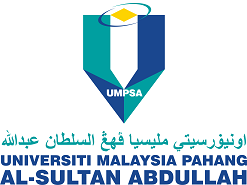SUPERCRITICAL WATER GASIFICATION AS A TREATMENT FOR LABORATORY ORGANIC WASTE
DOI:
https://doi.org/10.15282/jceib.v4i1.3880Keywords:
Gasification, Gibbs energy, Laboratory organic wastes, Supercritical waterAbstract
The thermodynamics of supercritical water gasification (SCWG) was studied in order to determine its potential for treatment of laboratory liquid organic waste. A thermodynamic model based on the minimization of Gibbs energy was developed in Aspen Plus software that simulated the SCWG of liquid lab organic wastes on an ash free basis. The feed stream contained a mixture of aliphatic (hexane), oxygenated (acetone, ethyl acetate,ethyl ether, isopropyl alcohol and methanol), aromatic (toluene and xylene) and chlorinated hydrocarbons (chloroform and dichloromethane). The showed that a pressure of 25 MPa, low organic material concentration of 5-10% in the feed and temperatures over 600oC, SCWG resulted in hydrogen rich syngas aith a trace amount of HCI in the liquid effluent. High conversion rates were obtained for oxygenated hydrocarbons having destruction and removal efficiency (DRE) greater than 99.99% with the rest of the compound having a 100% DRE. The composition of the gaseous stream was found to be such that the gas could be released safely to the atmosphere or be stored at high pressure. The study established a proof of concept that there is potential for laboratories to use this method to deal with organic lab wastes with the SCWG process effluent that is environmental friendly.



